Abstract
Rats were exposed to a random sequence of reinforcement on two levers, such that there was no way to predict from the previous reinforcement which lever would deliver reinforcement next. The rats showed a tendency to repeat the choice that had just produced reinforcement, despite the absence of an overall contingency that differentially reinforced such repetition. However, this tendency decreased with continued exposure to the schedule. Runs of successive reinforcements on a lever increased the probability of pressing that lever, but only slightly, and only in the earlier phases of training. The more quickly a press was made after reinforcement the more likely it was to be on the lever that had delivered that reinforcement. Repetition of choice followed by reinforcement should be viewed as a naturally occurring behavior in the rat, but not necessarily as a behavior that will continue without differential reinforcement of repetition.
Full text
PDF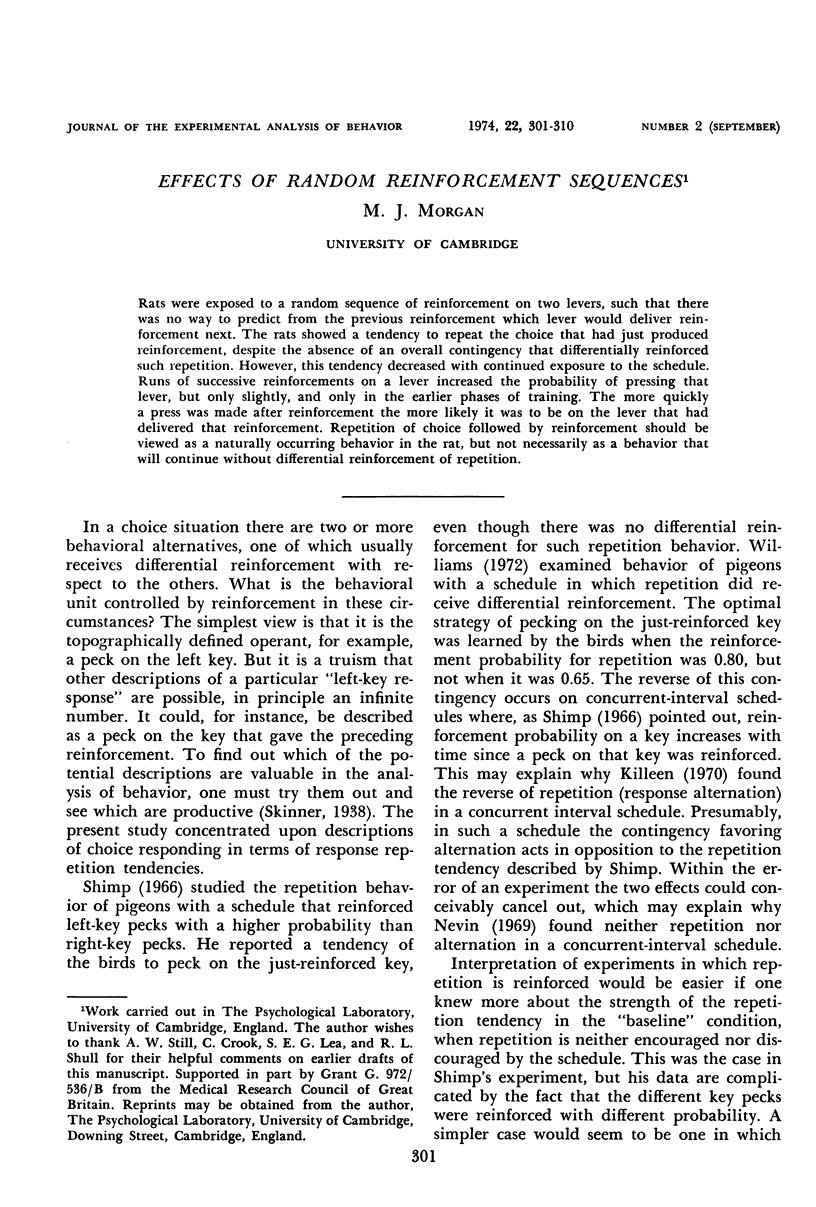
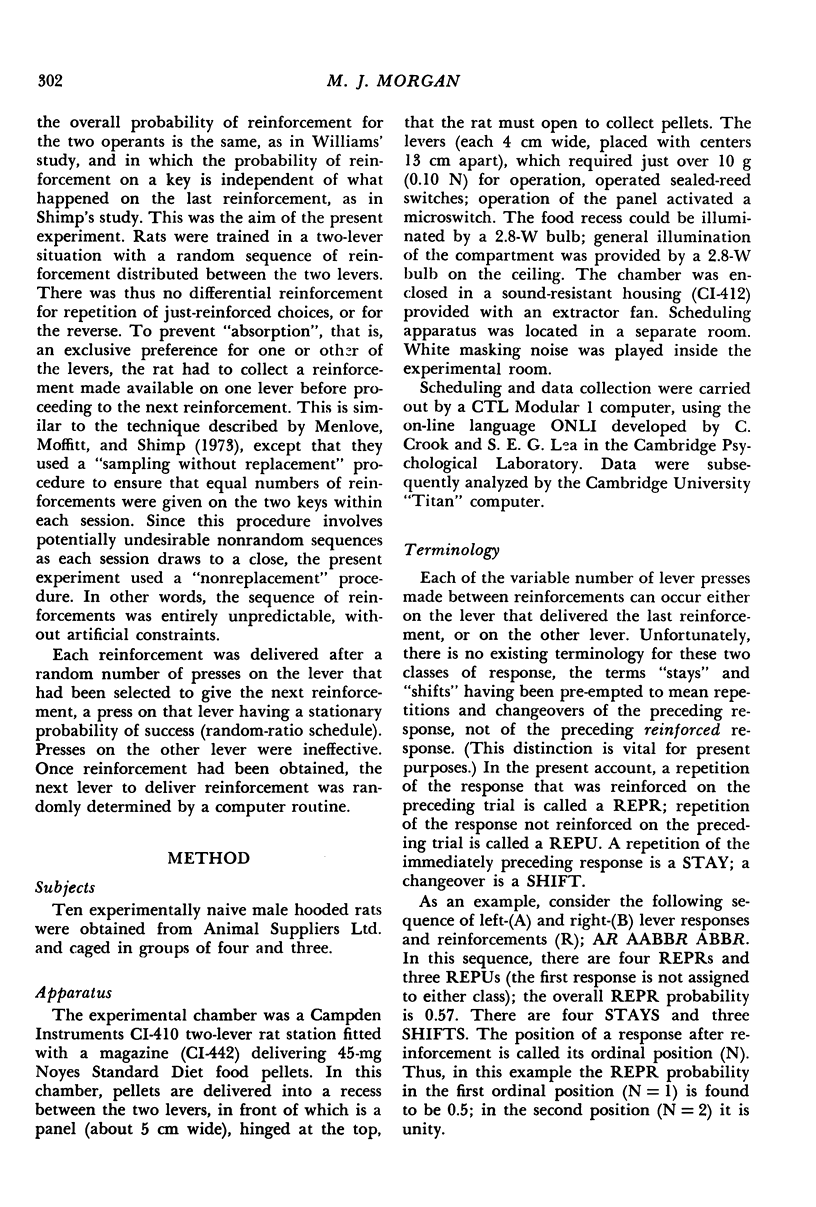
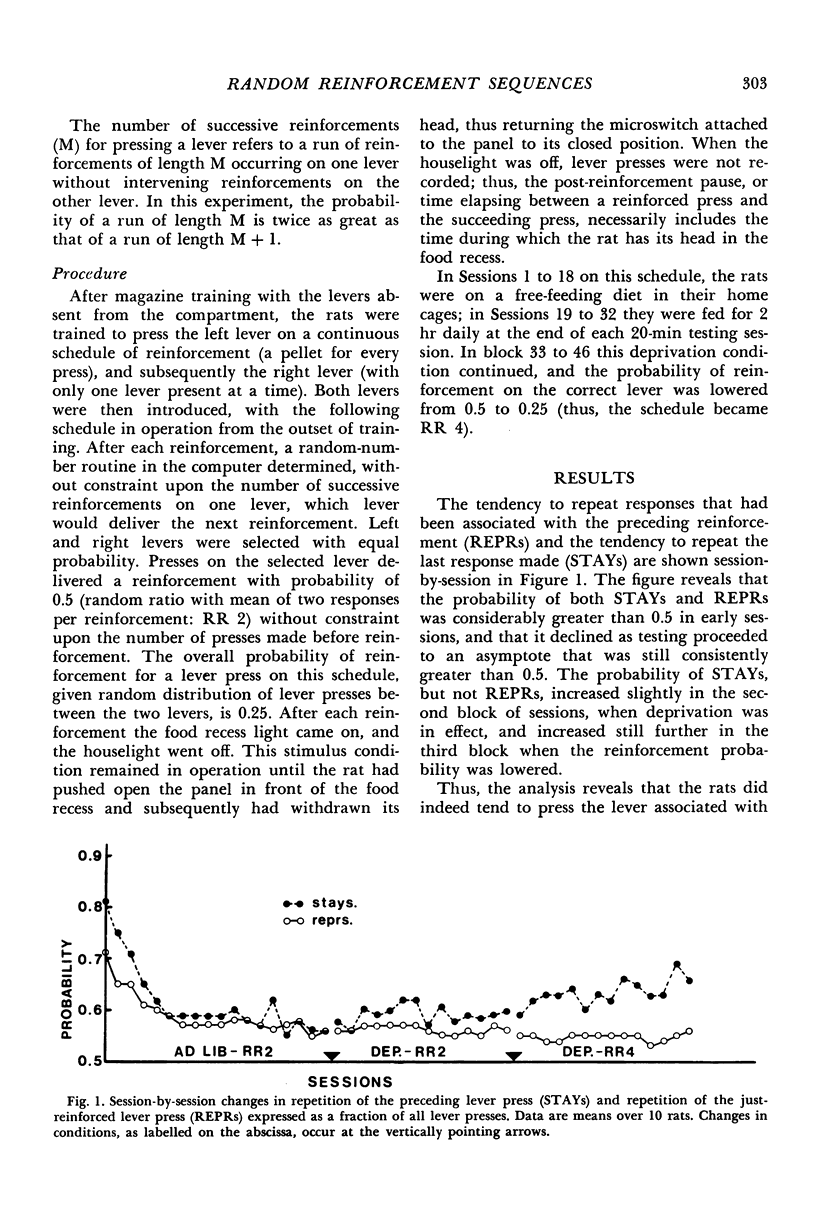
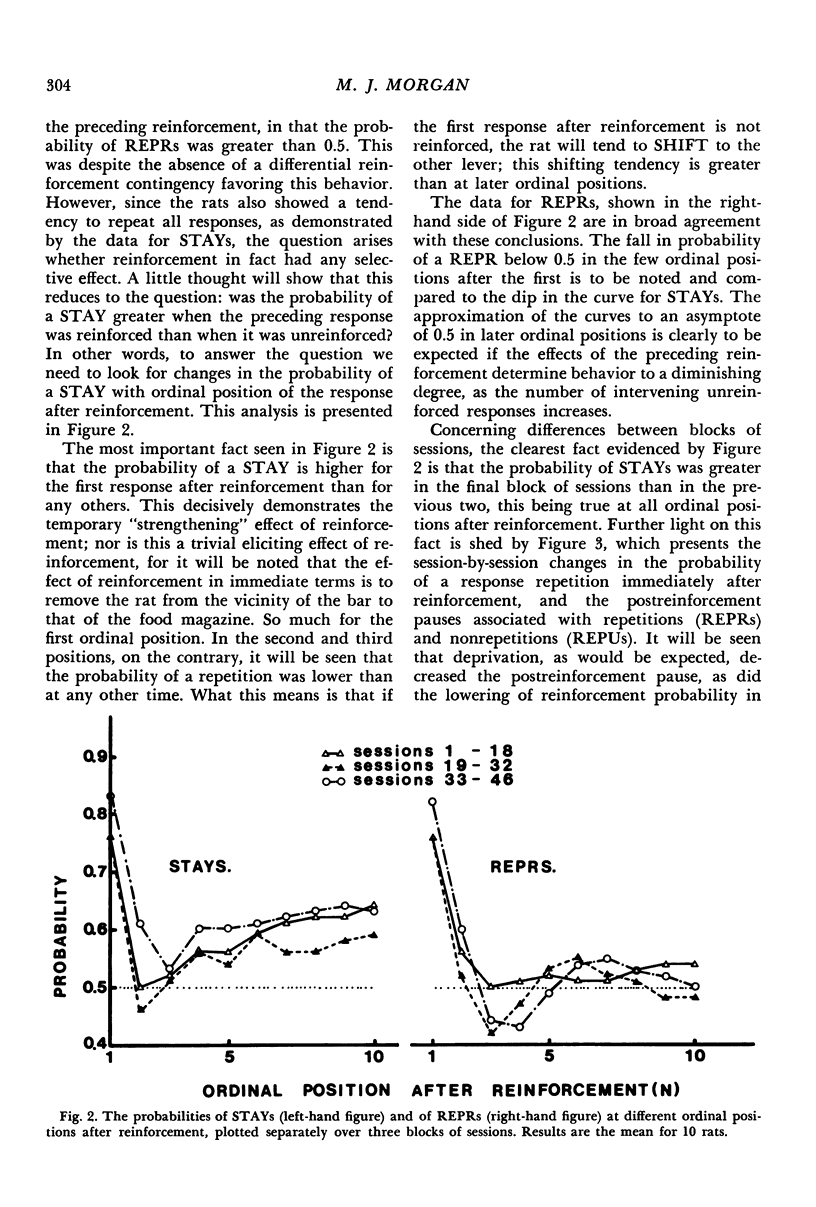
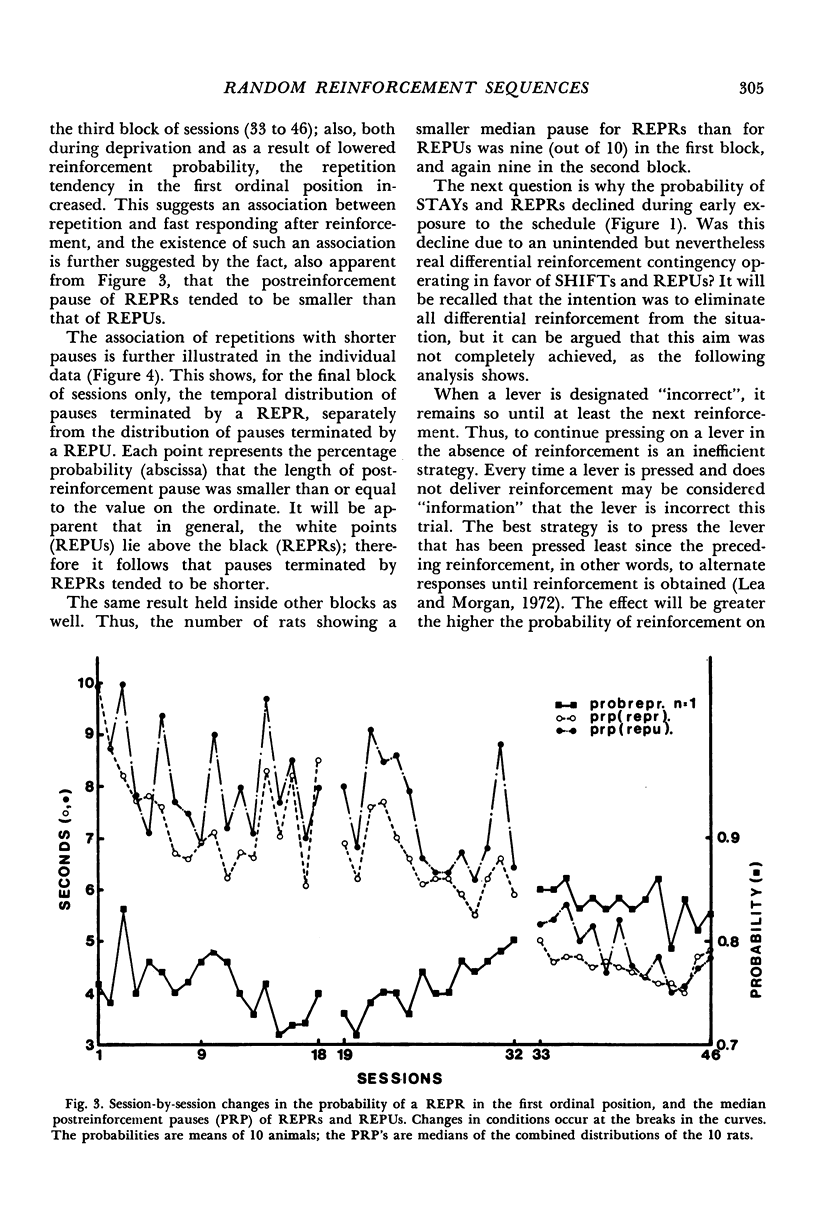

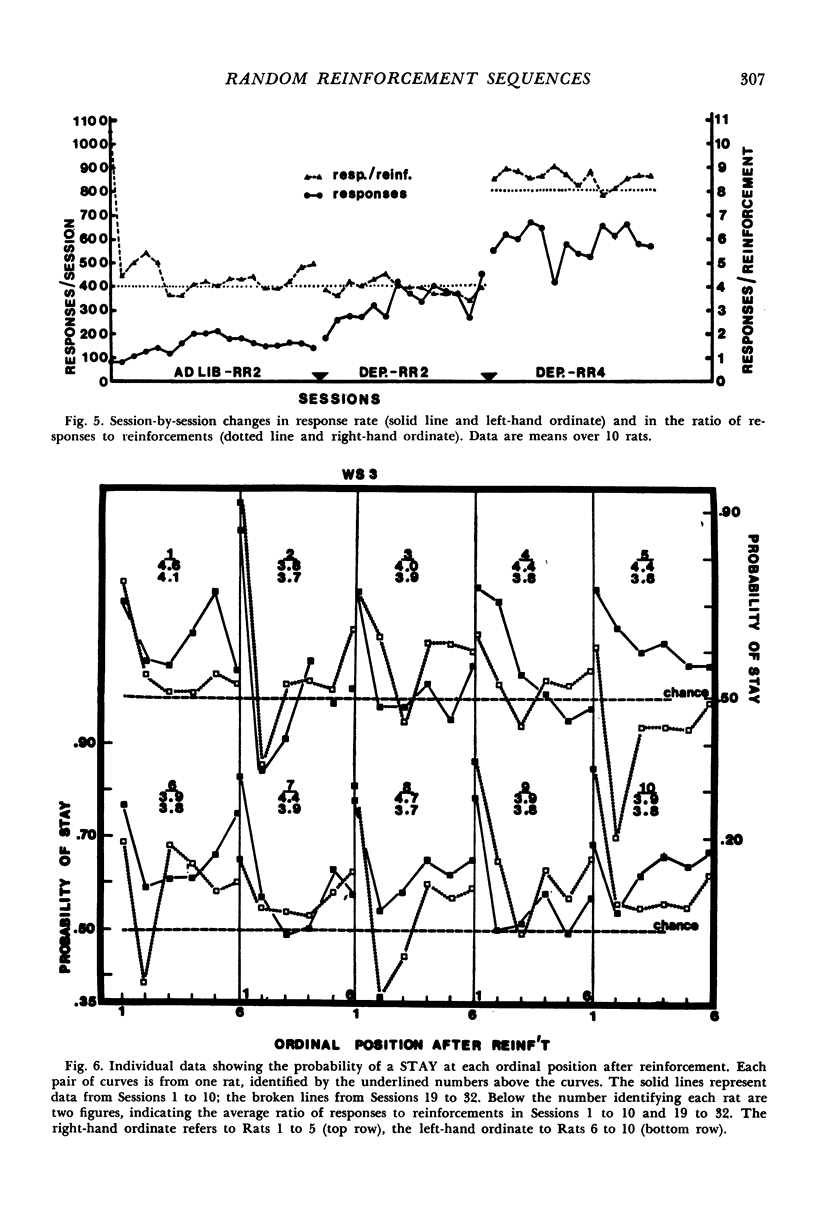

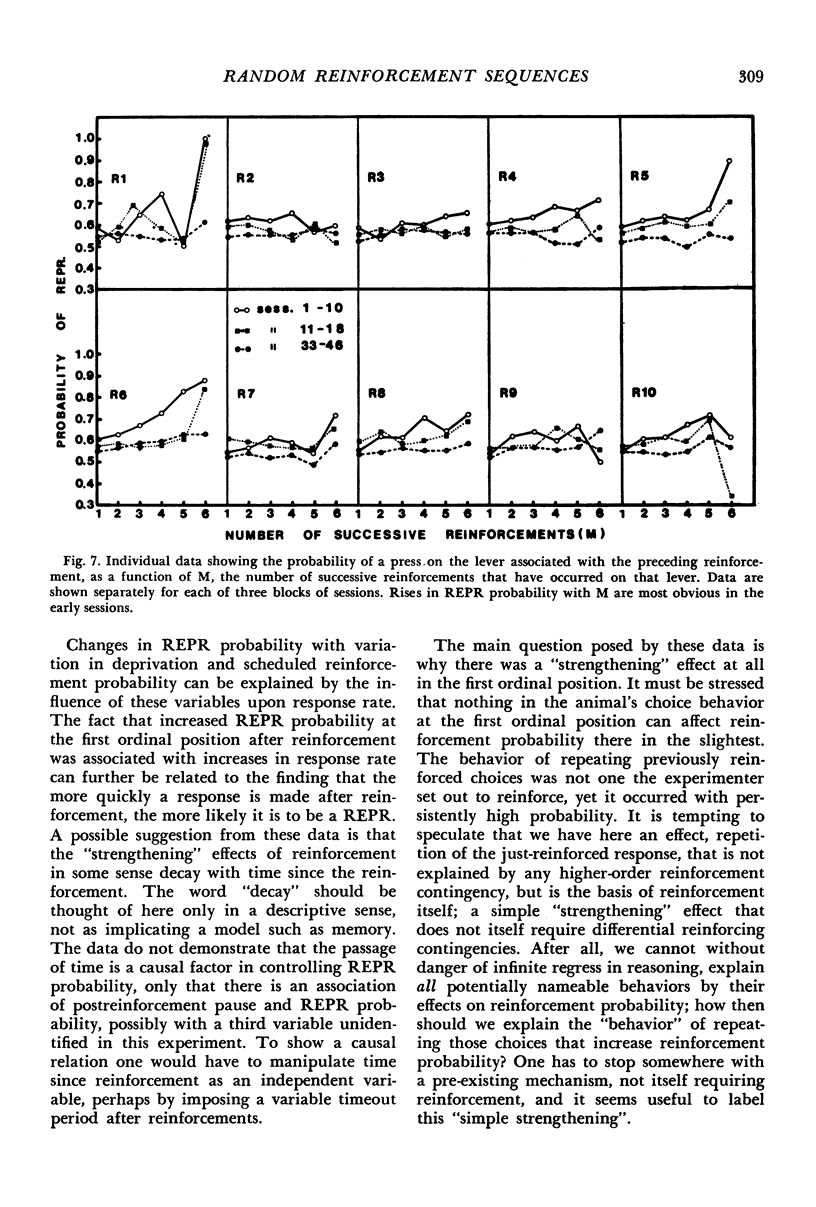
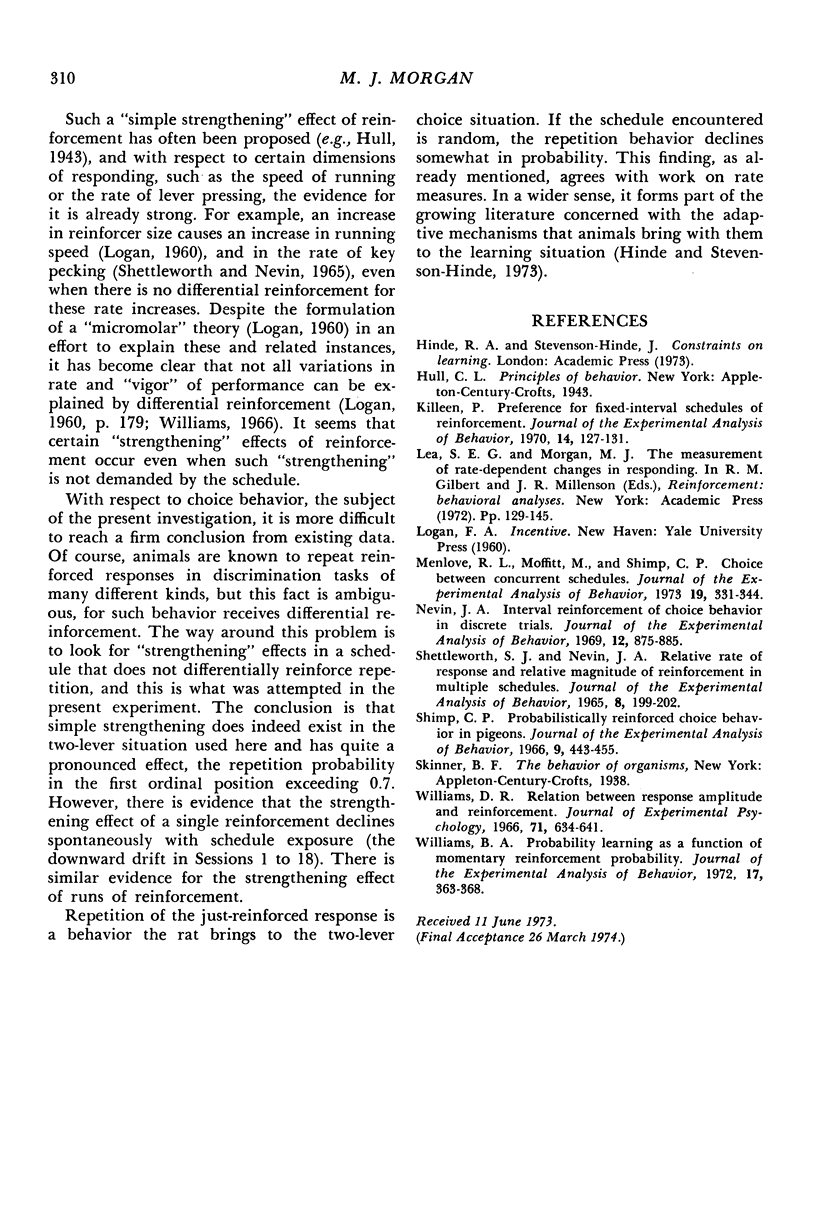
Selected References
These references are in PubMed. This may not be the complete list of references from this article.
- Killeen P. Preference for fixed-interval schedules of reinforcement. J Exp Anal Behav. 1970 Sep;14(2):127–131. doi: 10.1901/jeab.1970.14-127. [DOI] [PMC free article] [PubMed] [Google Scholar]
- Menlove R. L., Moffitt M., Shimp C. P. Choice between concurrent schedules. J Exp Anal Behav. 1973 Mar;19(2):331–344. doi: 10.1901/jeab.1973.19-331. [DOI] [PMC free article] [PubMed] [Google Scholar]
- Nevin J. A. Interval reinforcement of choice behavior in discrete trials. J Exp Anal Behav. 1969 Nov;12(6):875–885. doi: 10.1901/jeab.1969.12-875. [DOI] [PMC free article] [PubMed] [Google Scholar]
- SHETTLEWORTH S., NEVIN J. A. RELATIVE RATE OF RESPONSE AND RELATIVE MAGNITUDE OF REINFORCEMENT IN MULTIPLE SCHEDULES. J Exp Anal Behav. 1965 Jul;8:199–202. doi: 10.1901/jeab.1965.8-199. [DOI] [PMC free article] [PubMed] [Google Scholar]
- Shimp C. P. Probabilistically reinforced choice behavior in pigeons. J Exp Anal Behav. 1966 Jul;9(4):443–455. doi: 10.1901/jeab.1966.9-443. [DOI] [PMC free article] [PubMed] [Google Scholar]
- Williams B. A. Probability learning as a function of momentary reinforcement probability. J Exp Anal Behav. 1972 May;17(3):363–368. doi: 10.1901/jeab.1972.17-363. [DOI] [PMC free article] [PubMed] [Google Scholar]
- Williams D. R. Relation between response amplitude and reinforcement. J Exp Psychol. 1966 May;71(5):634–641. doi: 10.1037/h0023150. [DOI] [PubMed] [Google Scholar]


